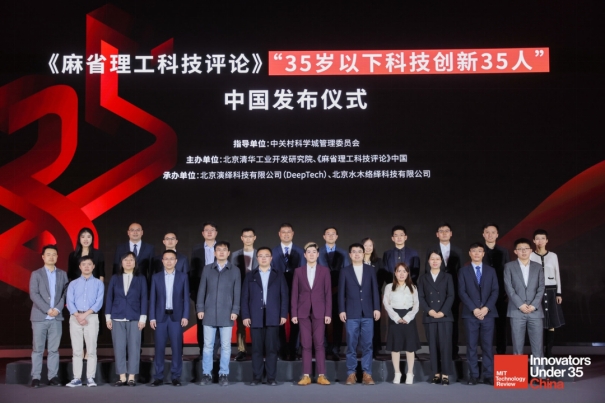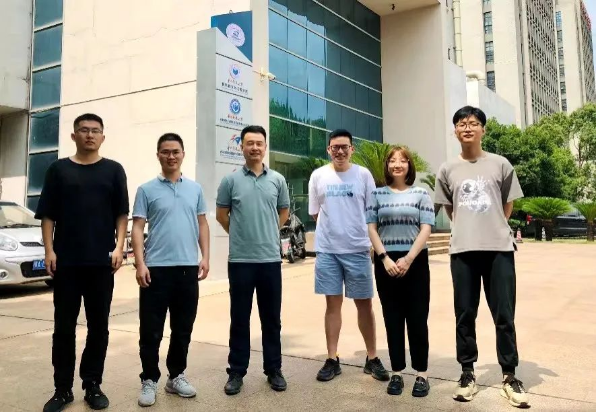On March 30, it was released by MIT Technology Review that Yao Yonggang, professor at the School of Materials Science and Engineering of Huazhong University of Science and Technology (HUST) has been named among the 35 Innovators Under 35 for China in 2022, for developing an innovative model of "electrothermal high-temperature transient synthesis and manufacturing".

He has developed an innovative model of "electrothermal high-temperature transient synthesis and manufacturing", which utilizes pulsed heating with clean electrical energy to achieve a new type of manufacturing of materials and chemicals that is efficient and low-carbon.
Yao Yonggang earned his B.S. and M.S. degrees from Xi'an Jiaotong University in 2010 and 2013 respectively, and his Ph.D. from the University of Maryland in 2018. After graduation, Yao worked as a postdoctoral fellow and assistant researcher at the University of Maryland before returning to China to join the School of Materials Science and Engineering of HUST in October 2020. He has long been engaged in the development of the ultra-high temperature transient synthesis and manufacturing technology, especially new energy materials and the low carbon rapid manufacturing technology. His works have been published in several journals, including Science, Nature, Nat. Nano, Nat. Cata, and Sci. Adv. He has so far authored 44 papers with more than 10,000 citations as the first, co-first, or corresponding author. He has been selected as one of the "Top 2% Scientists Worldwide" by Stanford University and "Highly Cited Scientists" by Clarivate, and received the "2020 R&D 100 Award" and the 2022 Metals Young Investigator Award.

Professor Yao Yonggang (first from left) at the ceremony
Boost “carbon neutrality” with an innovation model
Yao has developed an innovative model of "electrothermal high-temperature transient synthesis and manufacturing", which can realize the synthesis and manufacturing of energy materials and chemicals under high temperature (1,000-3,000K) and ultra-fast (~millisecond-second level) heating conditions, significantly improving the energy efficiency and manufacturing efficiency of industrial production. In addition, the equipment can be powered by electricity, and does not rely on fossil fuel combustion, so it can realize efficient, low-carbon, and clean operation, thus providing solutions and equipment support for the energy chemical industry that is struggling with “decarbonization".
Yao used the high temperature transient synthesis method (2,000K, 55ms) to synthesize multi-nano high entropy alloys with uniform size, good dispersion, and atomic level mixing for the first time, which not only greatly expanded the catalyst composition space, but also successfully realized the development of a variety of high performance, high stability, and low cost catalyst systems, which greatly improved the reaction activity and selectivity in many types of energy-catalyzed reactions, and achieved energy-saving, emission reduction, and low-carbon reaction processes.
In 2022, he and his co-workers published a review article on high-entropy alloy catalysts in Science, systematically describing the history, synthesis, characterization, catalytic applications and data-driven accelerated development of high-entropy alloy catalysts and looking forward to their application in the field of high-efficiency and low-carbon energy catalysis. In the same year, Yao and his co-workers reported the pioneering use of the electrothermal high-temperature transient heating mode for thermochemical reactions. Unlike traditional steady-state heating, high-temperature but short-time heating (2,000K-20ms, cyclic pulsed heating) can activate inert reactants more efficiently and achieve precise energy supply, which not only saves energy and reduces emissions to a great extent, but also makes it easier for high value-added products (e.g. olefins, ammonia gas) to achieve high selectivity, high reaction rate, and high stability of catalyst.
As a new reaction-driven mode, this technology is expected to change the traditional chemical energy supply mode by replacing fossil fuel combustion with electrothermal transient heating, thus laying a solid foundation for the chemical industry to achieve high energy efficiency, low carbonization, and cleanliness.
Industrial production is a pillar of modern economy, and how to ensure sustainable economic development while significantly reducing carbon emissions is an epochal topic. The new electrothermal high-temperature transient synthesis and manufacturing technology is expected to significantly promote the development of material manufacturing and chemical production toward the direction of energy efficiency, low-carbon and emission reduction, and clean energy, and help achieve the strategic goal of "carbon neutrality" as soon as possible.
A misstep leads to new research direction
A "misstep" seven years ago resulted in an unexpected discovery, prompting Yao to focus his study on transient high-temperature synthesis.
In 2015, Yao was still working on his Doctorate at the University of Maryland, where he was supervised by Professor Hu Liangbing, an ethnic Chinese physicist who had featured three times on the cover of Science. By chance, the research group discovered the transient high-temperature phenomenon during a misstep. This misstep led to the subsequent high-temperature study, which eventually piqued the interest of Hu Liangbing's research group and is now being pursued by Yao's group.
With further research, the group developed a precise and controllable electrothermal transient high-temperature synthesis technology, which can realize new energy materials synthesis and electrothermal transient chemical processes under ultra-high temperature, ultra-fast, and non-equilibrium conditions.
"While chance discoveries in science are very important, a strong scientific background and extensive experimental research are required to convert chance into scientific discovery," said Yao.
Since he returned to China, Yao has focused on clean energy research, especially clean energy materials and rapid manufacturing technologies. He aspires to devote himself to the upgrading of the chemical and material manufacturing industry so that it can become clean, decarbonized, and green.

"When you find a problem, the opportunity comes."
At the New Energy Materials and Devices Research Center in the School of Materials Science and Engineering of HUST, Yao and his student Zhang Hao began to focus on how to achieve high-purity, high-efficiency, and low-pollution technologies for scaled-up battery material recycling. As for whether to continue to proceed with the familiar transient high temperature, or to step outside the limits and find a completely different new approach, Yao favors the latter, and he encourages Zhang to explore on his own boldly. "Education is more about starting a fire and opening a window than filling a pail with water. The only thing I need to do is to provide guidance and get along with the learner because my expertise might constrain his views," stated Yao.
Following several rounds of validation, they were able to create a brand-new technical prototype in the lab, but the instrumentation needed to make the theoretical invention a commercial success was still missing. After months of efforts, the group changed their perspective and focused on a piece of machinery that was originally not intended for the field. Through design modification, they were able to successfully realize the process and apparatus for precise battery material recovery at room temperature, enabling them to scale up battery recycling with high purity, high efficiency, and low pollution, as well as to scale up the prior processing volume of approximately laboratory gram-level to ton-level. Today, Yao and Zhang are making preparations for the industrialization of the technology.

The scope of Yao's research blueprint covers a wide range of topics, including the creation of new energy materials and new manufacturing technologies, the improvement of the energy efficiency and time efficiency of the materials manufacturing and chemicals manufacturing process, as well as the promotion of the clean, decarbonized, environmentally friendly, and sustainable growth of the industry. But the more goals he seeks to achieve, the more problems he will encounter.
"The goal of scientific research is to address issues and advance progress. When you find a problem, the opportunity comes. Nobody in scientific research can escape problems, and it's critical to see them as opportunities rather than obstacles,” said Yao.
Source: School of Materials Science and Engineering
Written by: Han Shiyu, Liu Jingyi
Edited by: Chang Wen, Peng Yumeng
